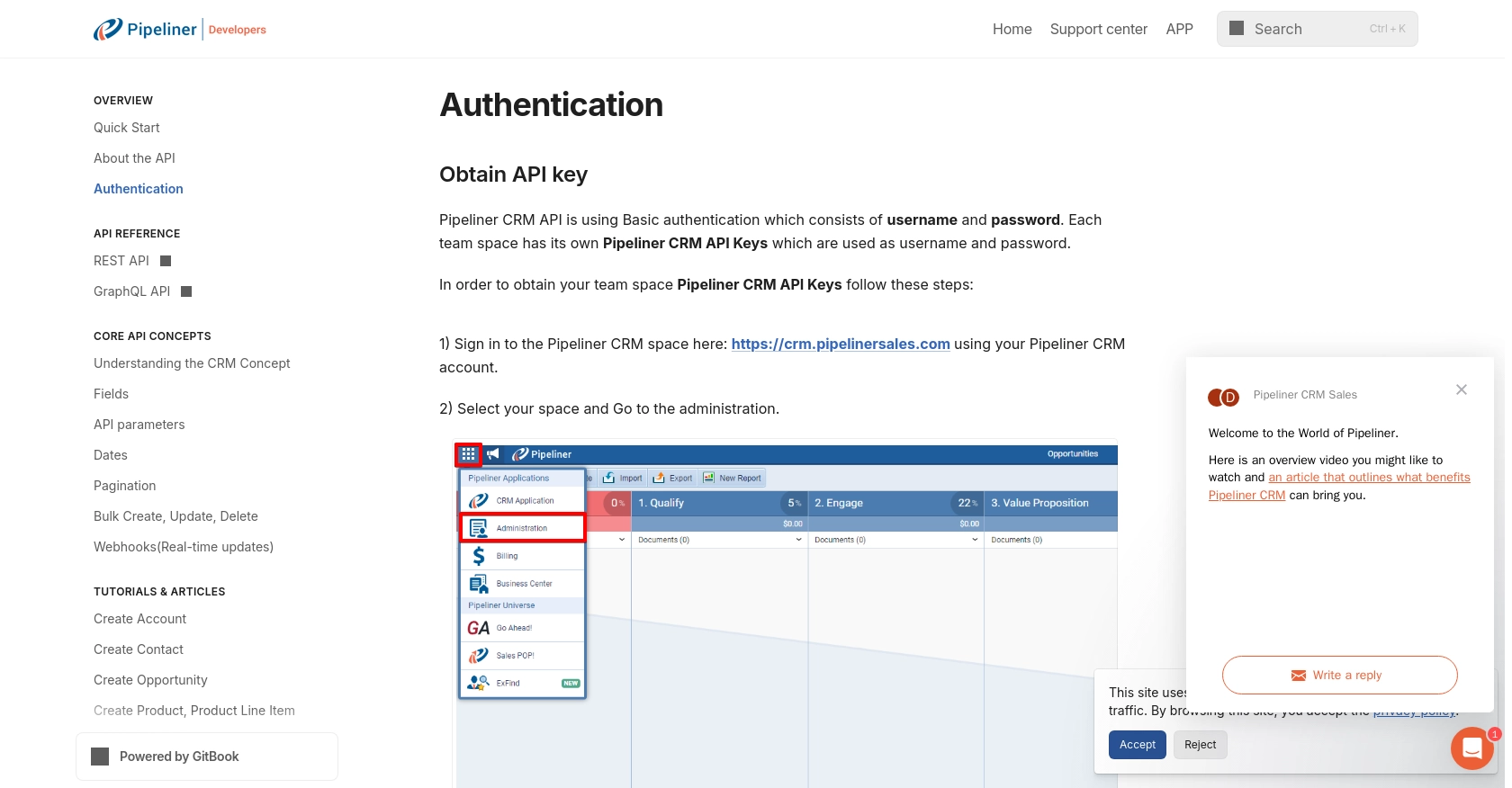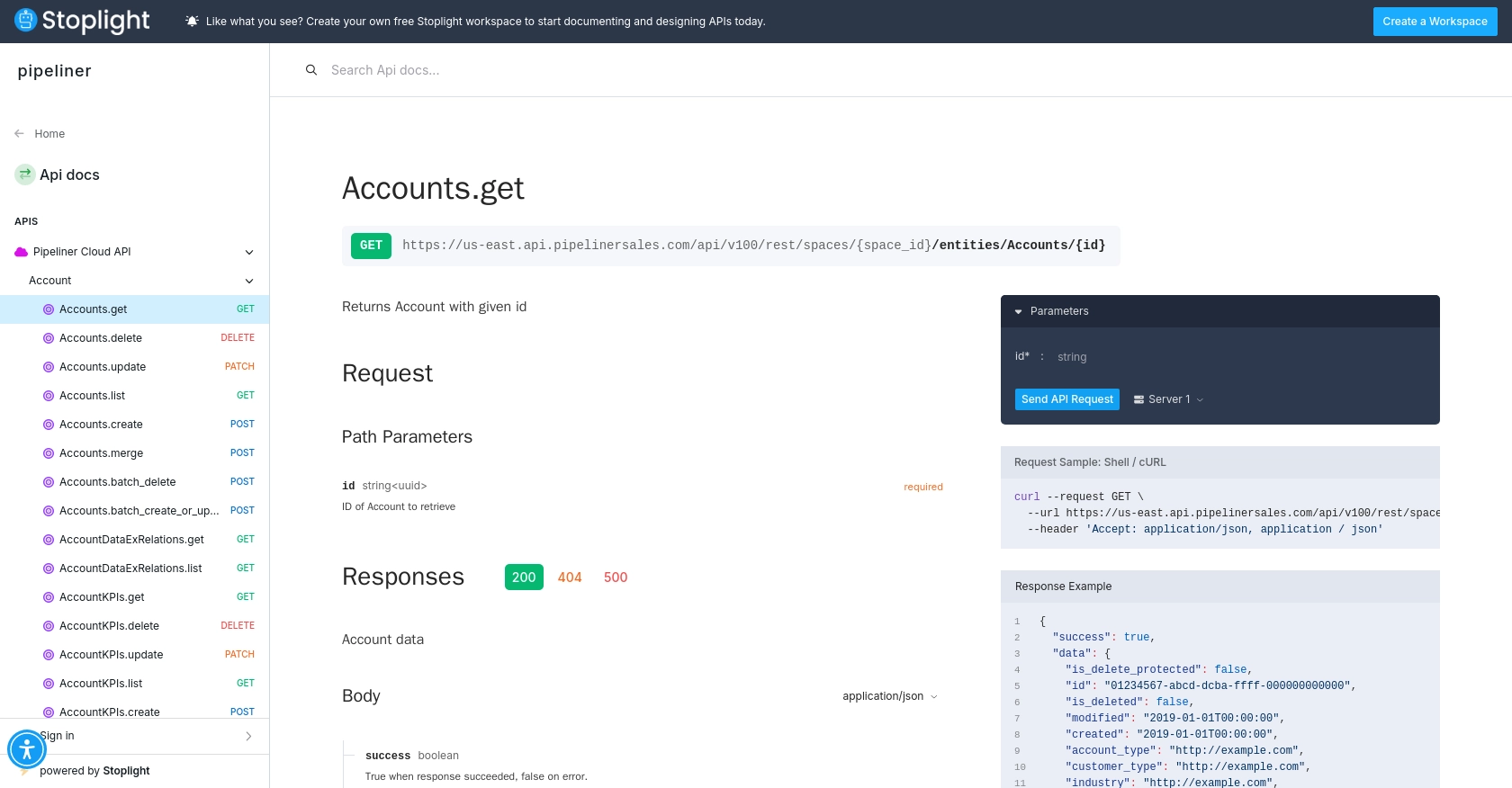Using the Pipeliner CRM API to Get Companies (with PHP examples)

Introduction to Pipeliner CRM
Pipeliner CRM is a powerful customer relationship management tool designed to enhance sales processes and improve team collaboration. It offers a comprehensive suite of features that help businesses manage leads, opportunities, and customer interactions effectively.
Integrating with the Pipeliner CRM API allows developers to access and manage company data seamlessly. For example, a developer might want to retrieve a list of companies from Pipeliner CRM to synchronize with an internal database, ensuring that sales teams have up-to-date information at their fingertips.
Setting Up Your Pipeliner CRM Test Account
Before you can start interacting with the Pipeliner CRM API, you'll need to set up a test account. This involves creating an application within your Pipeliner CRM space to obtain the necessary API credentials.
Step-by-Step Guide to Creating a Pipeliner CRM Application
- Sign In to Pipeliner CRM: Visit Pipeliner CRM and log in using your account credentials.
- Select Your Space: Once logged in, choose the appropriate space where you want to create the application.
- Access Administration: Navigate to the administration section by selecting the Unit, Users & Roles tab.
- Create a New Application: Under the Applications section, click on Create a new Application.
- Obtain API Credentials: After creating the application, click on Show API Access to reveal the API Username and Password. These credentials are crucial for Basic Authentication and are generated only once, so ensure you store them securely.
Understanding Pipeliner CRM API Authentication
Pipeliner CRM uses Basic Authentication, which requires a username and password. These are your API keys, and they are unique to each team space. Make sure to handle these credentials with care to maintain security.
For more detailed information on authentication, refer to the Pipeliner CRM Authentication Documentation.

sbb-itb-96038d7
Making API Calls to Retrieve Companies from Pipeliner CRM Using PHP
To interact with the Pipeliner CRM API and retrieve company data, you'll need to set up your development environment with PHP and make use of HTTP requests. This section will guide you through the process of making API calls to fetch a list of companies from Pipeliner CRM.
Setting Up Your PHP Environment for Pipeliner CRM API Integration
Before making API calls, ensure you have PHP installed on your machine. You can download it from the official PHP website. Additionally, you'll need the cURL extension enabled, which is commonly used for making HTTP requests in PHP.
PHP Code Example for Fetching Companies from Pipeliner CRM
Below is a PHP script that demonstrates how to retrieve a list of companies from the Pipeliner CRM API using Basic Authentication.
<?php
// Pipeliner CRM API credentials
$username = 'your_api_username';
$password = 'your_api_password';
// API endpoint for retrieving companies
$url = 'https://your_space_id.pipelinersales.com/api/v1/companies';
// Initialize cURL session
$ch = curl_init($url);
// Set cURL options
curl_setopt($ch, CURLOPT_RETURNTRANSFER, true);
curl_setopt($ch, CURLOPT_HTTPAUTH, CURLAUTH_BASIC);
curl_setopt($ch, CURLOPT_USERPWD, "$username:$password");
// Execute cURL request
$response = curl_exec($ch);
// Check for errors
if (curl_errno($ch)) {
echo 'Request Error:' . curl_error($ch);
} else {
// Decode the JSON response
$data = json_decode($response, true);
// Display the list of companies
foreach ($data['data'] as $company) {
echo 'Company Name: ' . $company['name'] . '<br>';
}
}
// Close cURL session
curl_close($ch);
?>
Replace your_api_username and your_api_password with the credentials obtained from your Pipeliner CRM application setup. Also, replace your_space_id with your actual space ID.
Verifying API Call Success and Handling Errors
After executing the script, you should see a list of company names printed on your screen. If the request is successful, the data will match the companies available in your Pipeliner CRM test account.
In case of errors, the script will output the error message. Common issues may include incorrect credentials or network problems. Ensure your API keys are correct and that your network allows outbound HTTP requests.
Understanding Pipeliner CRM API Pagination
The Pipeliner CRM API supports pagination, allowing you to retrieve large sets of data in manageable chunks. By default, the API returns up to 30 records per request, but this can be adjusted up to 100 records.
To handle pagination, use the end_cursor and after parameters to iterate through pages until has_next_page is false. For more details, refer to the Pipeliner CRM Pagination Documentation.

Conclusion and Best Practices for Pipeliner CRM API Integration
Integrating with the Pipeliner CRM API using PHP allows developers to efficiently manage and synchronize company data, enhancing the capabilities of sales teams. By following the steps outlined in this guide, you can set up a seamless connection to retrieve and handle company information.
Best Practices for Secure and Efficient Pipeliner CRM API Usage
- Secure Storage of Credentials: Always store your API credentials securely. Consider using environment variables or secure vaults to prevent unauthorized access.
- Handling Rate Limits: Be mindful of API rate limits to avoid service interruptions. Implement retry logic with exponential backoff to handle rate limiting gracefully.
- Data Standardization: Ensure that the data retrieved from Pipeliner CRM is standardized to match your internal database schema, facilitating smooth data integration.
- Efficient Pagination: Utilize pagination effectively to manage large datasets, ensuring that your application remains responsive and efficient.
Streamlining Integrations with Endgrate
While integrating with Pipeliner CRM directly is powerful, managing multiple integrations can be complex and time-consuming. Endgrate offers a unified API solution that simplifies the integration process, allowing you to focus on your core product development.
By leveraging Endgrate, you can build once for each use case and effortlessly connect to various platforms, including Pipeliner CRM. This not only saves time and resources but also provides an intuitive integration experience for your customers.
Explore how Endgrate can enhance your integration strategy by visiting Endgrate today.
Read More
Ready to get started?
